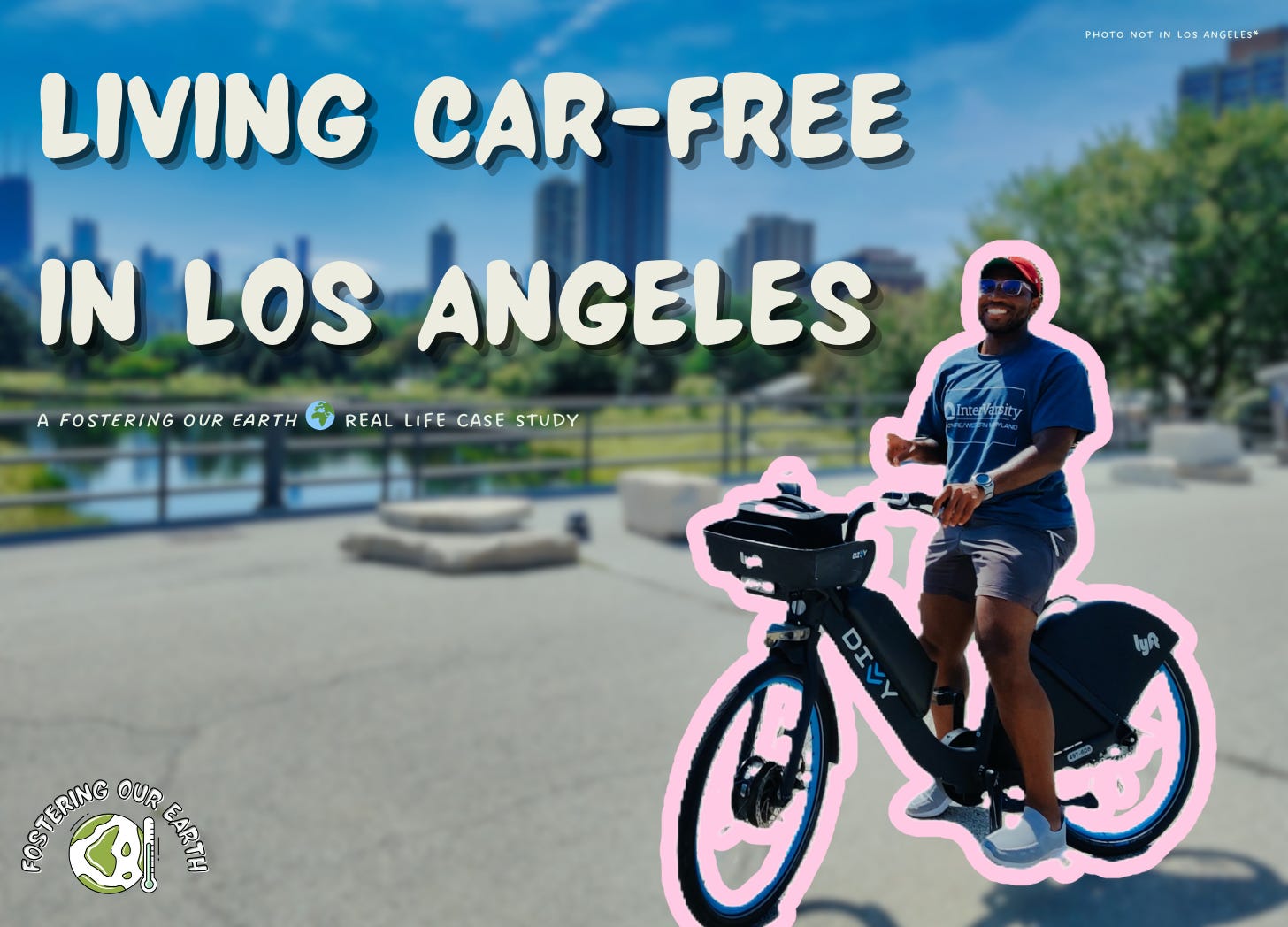Living Car-Free in Los Angeles: My Personal Journey
My personal narrative about choosing to live car-free in Los Angeles and challenging car-centric culture.
Hi future ancestors! Today, I’ve got a personal story to share about living-car free in LA. Feel free to comment your thoughts below or reply directly to this email!
Choosing to live in Los Angeles, a city synonymous with car culture, without a car might seem impossible – borderline madness. You always hear about the massive highways, the endless congestion, and its non-existent public transit system (not true!). So, when I tell people I don’t own a car, I get crazy stares of disbelief. I wanted to take some time to reflect on car ownership and how I make it work. Below is my reflection on my journey to car-free living; it’s a story of gradual discovery, personal transformation, and a deep belief that our current mobility systems need reimagining.
Our mobility systems are currently broken. We are dependent on cars to get anywhere; these cars provide a false sense of freedom when, in reality, they restrict us individually and as a society. A sustainable future promotes freedom and independence in how we move around our activity spaces. I’ve written a series of sustainable mobility systems blog posts here, diving into different types of mobility from active mobility, and public transport, to shared mobility systems and transportation electrification. Without further ado, let’s get to my story.
My transit journey
My relationship with transportation began in suburban Baltimore County, where driving was realistically the only option. The only time you’d ride a bus was to go to school, but by 16, when we got our licenses, that immediately stopped. My first real exposure to transit came during a pivotal college internship with the Maryland Transportation Administration’s Office of Planning. That summer, I didn’t just talk to community members about Baltimore’s recently redesigned transit system; I practiced it. I lived in Baltimore County, so I’d be dropped off at the nearest park and ride (yes, cars are still involved), and then I’d take the bus into the city. During the day, I had meetings across Baltimore, so I’d hop from bus to bus to get to my locations and sometimes ride the subway.
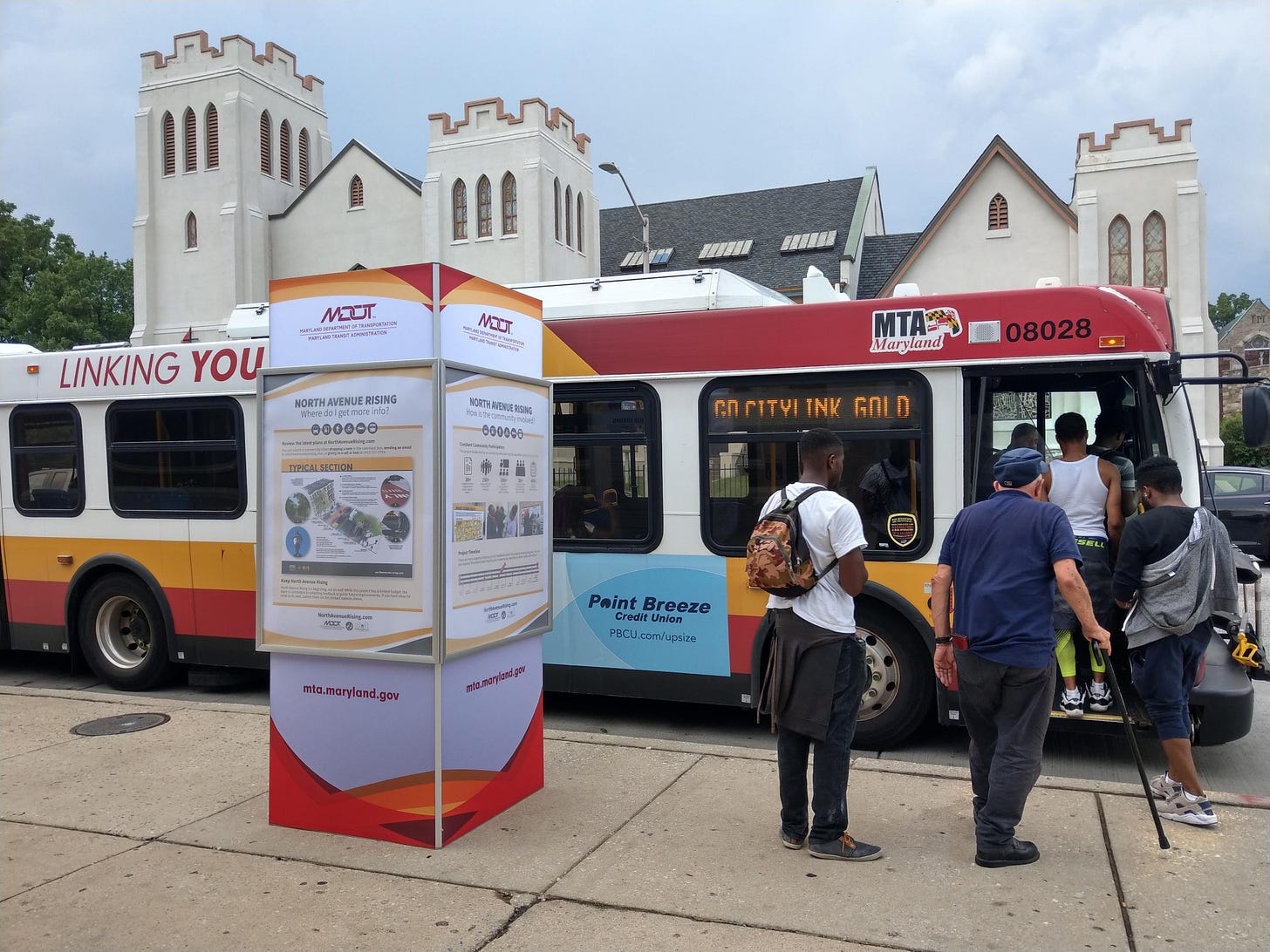
My experiences with transit continued when I lived in Baltimore and worked in DC. I woke up at 4:30 am to catch the 6:10 MARC Penn Line train from Penn Station to Union Station, eventually making my way down to Navy Yard every day. Despite early mornings, narrow misses, and stinky packed afternoon trains, I found something unexpected: I really enjoyed the routine and consistency public transit provided me. I became best friends with Michael Barbaro and Steve Inskeep, listening to UpFirst and The Daily, and I read multiple books – from Yuval Noah Harari’s Homo Deus to Maya Angelou’s I Know Why the Cage Bird Sings. These experiences continued to shape my mobility philosophy – one rooted in freedom and practicality.
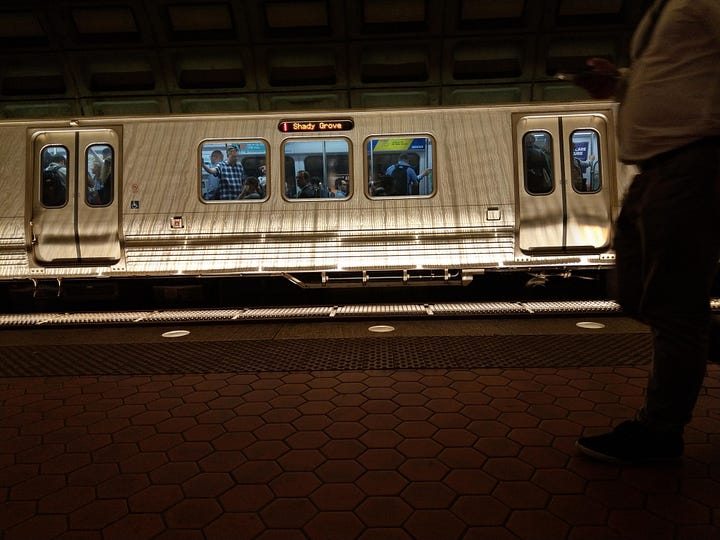

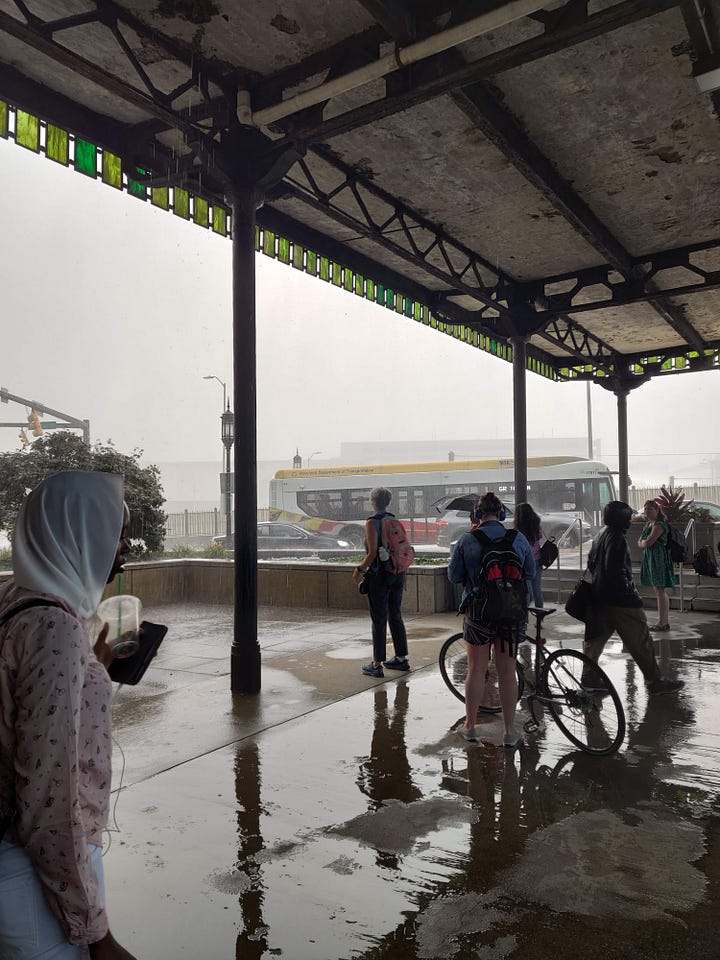
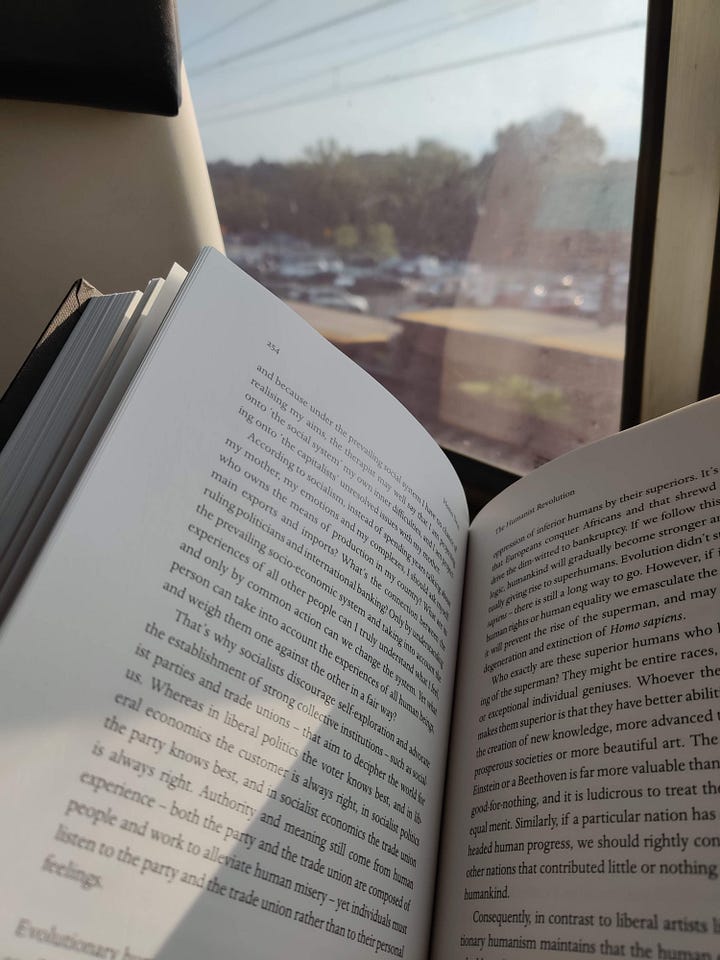
When I moved to Stanford, I discovered the joy of biking for errands like groceries and personal trips like church. I found it convenient to borrow a Zipcar for a few hours for longer trips – a weekend in Santa Cruz or just getting my haircut in Redwood City.
Finally, in London, I spent an entire week navigating the city without a car, crystallizing my beliefs about transportation freedom. Through all these experiences, I not only knew that a car-free life was possible, but a better, more sustainable mobility could exist.
Why go car-free
Okay, but besides my personal experiences, why would anyone go car-free? Honestly, it's all about cars and how they’re a massive economic and environmental burden. Cars are expensive (often our second-largest expense after housing), deadly (some 40,000 deaths annually), and a major source of GHG emissions (the largest in California). Beyond individual costs, cars dictate our land use patterns, thereby creating sprawling cities that prioritize vehicles over people. These reasons form the core argument of the “war on cars” movement. You can learn more about it through the War on Cars podcast or the following Fostering Our Earth Podcast Episodes with Jerome Horne and Veronica O. Davis.
Making car-free living work
Living car-free isn't about deprivation; it's about reimagining mobility. When moving to LA, knowing the car-centric hell I was entering, I knew I had to be strategic. I prioritized access to public transit on my apartment search spreadsheet. I chose to live in Pasadena near my partner, but my specific home is one minute from a bus stop that takes me to the nearest train station, where I commute to work downtown. Since cars sit parked 95% of the time, I took lessons from my Zipcar experiences to practice “shared mobility” with my partner, who owns a car. With my proximity to transit and access to a car, I am free to choose the best mode for my trip.
The core of practicing this is my “transit-first” approach. Before any trip, I ask: "can I get there by transit?" With real-time tracking apps like Transit and Google Maps, I can plan my routes, visualize my transfers to new locations, and feel comfortable commuting around LA. I also own a scooter for slightly longer last-mile connections.
This isn’t without challenges, though. Summer heat can make waiting at an exposed bus-shelterless station uncomfortable, and missed connections — when you’re transferring to another bus/train) — can test your patience or disrupt carefully planned routes. Through these experiences, I’ve learned to always carry a portable charger to keep my phone alive (specifically for navigation apps), wear comfortable shoes because I might walk more than planned, and approach each journey with a sense of adaptability.
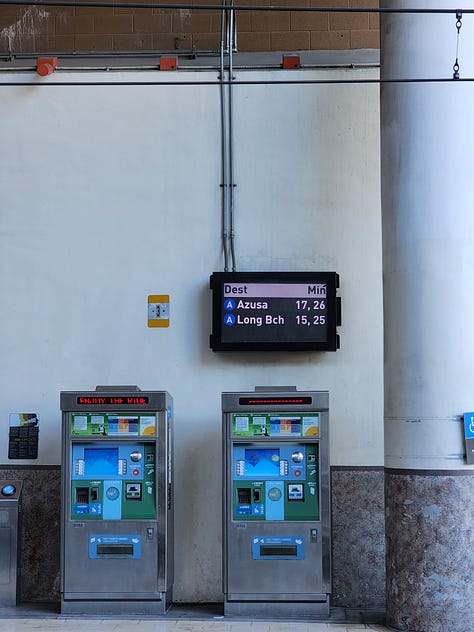
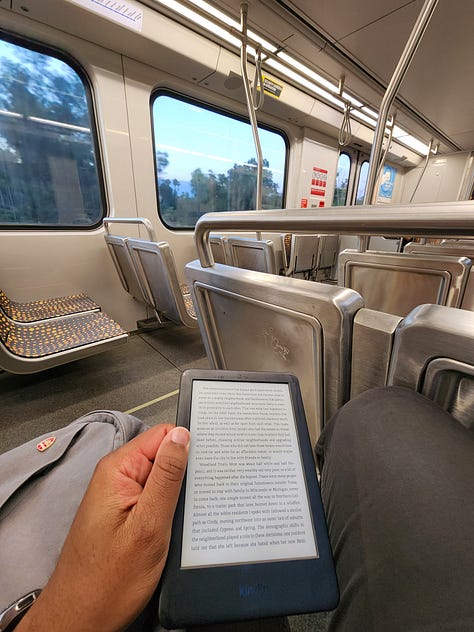
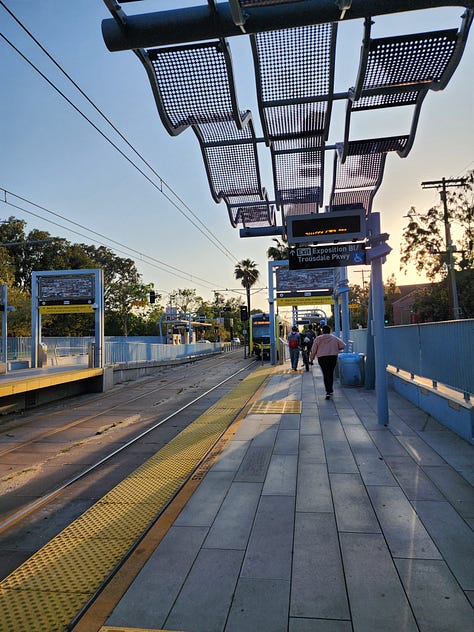
Safety is also a real consideration. I’ve had a few interactions with folks experiencing homelessness or struggling with mental health issues. These experiences are stark reminders of the complex social issues and disparities that exist in our cities. But for the most part, my transit experiences have been positive.
Now, I’m not saying I don’t ever drive – in fact, if there are too many logistical hoops, I’ll opt to drive. These include a late return trip, walking in unsafe parts of the city (on or near busy roads), or simply if there are way too many transfers (my limit is two). Also, if a trip will take significantly longer by transit and I don’t have the time to spare, then I’ll drive. Of course, carpooling is also an option when appropriate. Again, the key here is the freedom to choose. Also, I understand my privilege of being able to choose where to live and having a job that enables me this flexibility.
Finally, living car-free has given me a unique lens to understand how urban design influences our world. When you move through a city without a car, you notice things most drivers miss, such as broken and uneven sidewalks, which might be inequitable for parents with strollers, or how short the crosswalk countdown is, which, if you have any mobility impairments, might cause stress. I’ve seen how areas zoned only for single-family housing create barriers to effective public transit and walkable communities. I’ve since become a more vigorous advocate for better land use planning and transportation.
If you’re still reading, I invite you to experiment with one car-free day this week. Whenever you open Maps to see your route, check out the transit tab to imagine what that journey could look like. Get prepared by getting yourself your local transit cards so it isn’t a barrier when you decide to try transit. While you’re at it, you should check if you can pay for your transit directly with your phone. If transit isn’t possible, consider carpooling with anyone near you. Shared mobility isn't just a transportation choice; it's an approach that offers a more connected, sustainable way of moving through the world. The world as it is today doesn’t have to be what it is tomorrow, so get out there and advocate for more sustainable mobility systems.


